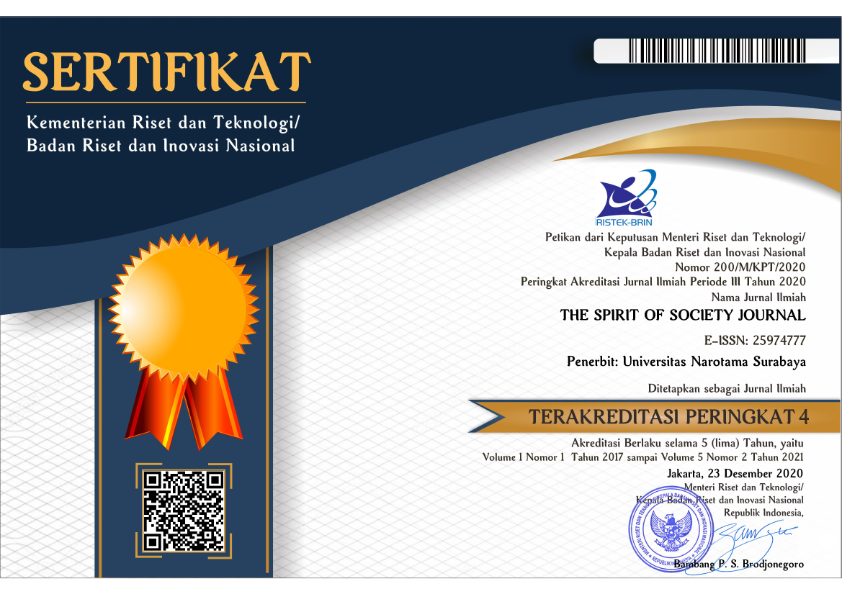Implementation Adaptive Decision Feedback Equalizer for Time-Reversal Communication in Shallow Water Environment
Abstract
Underwater wireless communications are growing very fast along with human needs for applications such as defense, state security, underwater control and monitoring systems. Until now, an acoustic signal is a practical way to achieve long distance communication in the ocean. However, the underwater acoustic channel faces many challenges including limited available bandwidth, long delays, time-variability, and Doppler-spread. These challenges can reduce the reliability of the communication system and the achievement of high data-rate becomes a challenge. Adaptive decision feedback equalization is a method to compensate for the distortion of information signals on the underwater acoustic channel. On the other hand, time reversal is an effective method of overcoming intersymbol interference (ISI) problems which is the effect of multipath phenomena in underwater channels. Spatial focusing on time reversal can reduce the co-existing system disturbances and its temporal focusing makes the received power concentrated within a few taps so that the equalizer design work becomes much simpler. The temporal focusing can also increase the transmission rate. This paper shows that the combination of time reversal and adaptive DFE (TR-DFE) has superior performance than TR and DFE itself. By modifying the step-size parameters in the adaptive DFE, the TR-DFE level of convergence and performance can be improved. The geometry-based modeling which is used proves that distance and multipath variation greatly affect the quality of time reversal communication on the underwater acoustic channel.
Downloads
References
M.Stojanovic, L.Freitag, (2003). Acquisition of Direct Sequence Spread Spectrum Acoustic Communication Signals, Oceans’2003 Proceedings, Vol. 1, pp.22-26.
M. Stojanovic, J. A. Capitovic, and J. G. Proakis,(1993). Adaptive multichannel combining and equalization for underwater acoustic communications, J. Acoust. Soc. Amer., vol. 94, pp. 1621–1631.
T. C. Yang, (2004). Differences between passive-phase conjugation and decision-feedback equalizer for underwater acoustic communications, IEEE J. Ocean. Eng., vol. 29, no. 2, pp. 472–487.
T. C. Yang, (2005). Correlation-based decision-feedback equalizer for underwater acoustic communications, IEEE J. Ocean. Eng., vol. 30, no. 4, pp. 865–880.
D. Rouseff, D. Jackson, W. Fox, C. Jones, J. Ritcey, and D. Dowling, (2001). Underwater acoustic communications by passive-phase conjugation: Theory and experimental results, J. Ocean. Eng., vol. 26, pp. 821-831.
Widiarti, Y, Wirawan and Suwadi (2020). Joint time-reversal precoding and spatial diversity technique for acoustic communication in shallow water environment, International Journal of Intelligent Engineering and Systems. 13 1 pp 237-247.
H. Song, W. Hodgkiss, W. Kuperman, M. Stevenson, and T. Akal,(2006). Improvement of time reversal communications using adaptive channel equalizers, J. Ocean. Eng., vol. 31, pp. 487-496.
S. Qureshi, (1985). Adaptive equalization, Proceedings of IEEE, vol. 73, no. 9, pp. 1349-1387, 1985.
Proakis, J.G, (1989). Digital Communications; McGraw-Hill: New York, NY, USA, pp. 680–693.
Y. Widiarti, Suwadi, Wirawan, and T. Suryani, (2018). A Geometry-Based Underwater Acoustic Channel Model for Time Reversal Acoustic Communication, In: Proc. of the IEEE International Seminar on Intelligent Technology and Its Applications, pp. 345-350.
P. Blomgren, P. Kyritsi, A. D. Kim, and G. Papanicolaou, (2008). Spatial focusing and intersymbol interference in multiple-input-single-output timer reversal communication systems," IEEE J. Ocean. Eng., vol. 33, pp. 341-355.
T. B. Santoso, E. Widjiati, Wirawan and G. Hendrantoro, (2016). The Evaluation of Probe Signals for Impulse Response Measurements in Shallow Water Environment, IEEE Transactions on Instrumentation and Measurement, vol. 65, no. 6, pp. 1292-1299.
Copyright (c) 2022 THE SPIRIT OF SOCIETY JOURNAL : International Journal of Society Development and Engagement

This work is licensed under a Creative Commons Attribution-ShareAlike 4.0 International License.












